Chris Baty's Blog, page 170
February 4, 2015
3 Questions to Ask As You Cut Your Manuscript
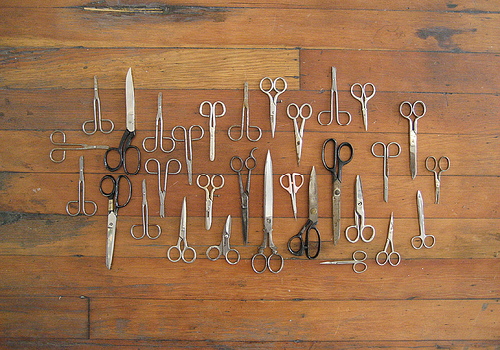
The 2015 “Now What?” Months are here! Throughout January and February, we’ll be bringing you editing, revision, and publishing advice from all corners of the publishing world. Today, Sarah Ahiers, author of All That Remains, tells us why we should be unafraid of making big cuts during revision:
I’m a bit of a NaNoWriMo cheater. As long as I get my word count done for the day, I allow myself to edit in November. Usually it’s just line edits—fixing typos, changing dialogue, adjusting a line here or there. But, when NaNo rolls to an end, I’m left with a fairly clean draft.
When I reached the end of my novel All That Remains (new working title Assassin’s Heart) in NaNo 2012, the story was in place, but I knew I had to bring out and uncover other elements, like my themes, my settings, and especially my character arcs.
Revisions are some of the hardest things to tackle as a writer. Many times you know something needs to be fixed, but you don’t know how to fix it. Or you’re willing to fix whatever needs fixing, but you just don’t know what that is. Take your time. It’s not a race, and if you rush through revisions it could lead to regret. Here are a few questions I asked myself:
Are my themes developed enough?
The first thing I did was cut. I looked at each scene and asked myself: Does this scene forward the plot, the character arcs, or the theme? If it didn’t, it had to go.
If it only forwarded one of those things, could it do double duty by forwarding the plot and the theme? Or all three?
Does my setting feel grounded and encompassing?
Because I was writing fantasy, I needed to work on my world building, clarifying spots where the reader might get confused about my world.
I also had to do research—like when were indoor toilets first used? Or what were renaissance kitchens like?
Are my characters’ emotional arcs where they need to be?
Two characters had to go because they didn’t further the plot or themes in any way, and anything important they did could be handed to other characters.
Once the fat was trimmed, I built up things that needed growth. Don’t think that polishing your manuscript with line edits is all that it takes. That’s the final stage of revision and though it must be done, it shouldn’t be done in place of the bigger revisions your manuscript most likely needs.
When all was said and done, it took me close to a year to revise and workshop my manuscript, then send it out to beta readers and critique partners.
But taking my time paid off! The manuscript was so much tighter. Every scene had been cleaned and scrubbed and my characters grew and changed and the themes were delicate when they needed to be and robust when I wanted. And I didn’t miss those cut characters—even if one had been pretty cool—or any of the cut scenes (I couldn’t even remember some of them).
Don’t be afraid to make drastic changes. Cut those characters and scenes, even the ones you think the story can’t live without. Cut them, and see how you will rewrite the story without them. If it doesn’t work, you can always go back to the old version. Nothing has to be permanent in revisions.
Revision is hard work. Writing the draft is hard, too, but revision is a different kind of hard, and while the results are worthwhile, in the midst of revisions that can seem far away.
Still, it is worth it. You spent all that time and energy writing the book, don’t sell yourself short by not revising as much as your book needs. You can do it.

Sarah Ahiers has an MFA in Writing for Children and Young Adults and lives in Minnesota with three dogs and a house full of critters. She has a collection of steampunk hats and when she’s not writing she fills her time with good games, good food, good friends and good family. She blogs at Sarah Ahiers Writes.
Top photo by Flickr user reebob.
February 3, 2015
Scribophile, Critique Partners, and Better Chapter Ones

Every year, we’re lucky to have great sponsors for our nonprofit events. Scribophile, a 2014 NaNoWriMo sponsor, asked one NaNoWriMo participant, Christina Dalcher, to share her experience with their online writing critique community:
I’d never written a piece of fiction in my life until August 2014.
Then I wrote a novel.
Let me be honest here: it stunk. Of course, I didn’t think it did. I thought it was the most creative, fresh, what-the-world-needs-now page-turner that would ever hit the market. So did my mother.
I went into a pitching and querying frenzy with a manuscript that was about as far from ready as it could be. Silly rabbit. I should have known better.
November rolled around, I put that piece of unready rubbish aside, and I signed up for National Novel Writing Month. In four weeks, I had a draft of an adult thriller. And no idea what to do with it.
That’s when the NaNoWriMo email showed up with a goodie-bag full of winner’s surprises. I didn’t think I needed any writing software (how little we newbies know!), and the fruits of November’s speedwriting efforts weren’t ripe enough to turn into an eBook—not even for Mom. I plucked one goodie from the bag.
Its name was Scribophile.
The Christmas decorations, the dog, the dinner, and my husband all waited patiently as I plunged the depths of critiquing and revising. I’ll confess—I had no idea what I was doing. In a previous life, I’d written a three-hundred page dissertation on Italian consonants (yes, really), graded students’ research papers, edited my colleagues’ work, and peer-reviewed journal articles. But I’d never lifted the heavy lids on the coffers of creative writing. Scribophile held my hand as I peeked inside.
There we were on our first day—me, my writing, and I—searching the spotlights for stories, casting critical eyes on the word-smithing of strangers, warily posting our own work for critique and commentary. Day One was scary.
Day Two went well. I picked out shorter pieces of writing to work on, looked for opening chapters of novels, and made sure to thank each and every one of my critiquers with both a personal note and a return of the favor. By evening, the Christmas decorations were still in their boxes and dinner was the farthest thing from my mind, but I had a tiny network of Scribophile pals and a better Chapter One. Not bad for two days’ work.
On Day Three, I woke to the three little words every writer wants to hear: Don’t burn it!
And that, fellow novelists, marked the beginning of a beautiful relationship.
Luck and timing and serendipity conspired in my favor, and—I’d like to think—in my new critiquing partner’s favor. Together, we raced through each other’s chapters, sometimes cringing, sometimes crying for more. Honesty comes so easily when you’re both strangers in the strange land of Scribophile.
Five weeks later, we’re still catching and correcting repeated words, POV drifts, telling-instead-of-showing, rambling run-ons, and ambiguous antecedents. We work on character development, story arcs, and plot holes. When something bugs us, we say it.
Five weeks later, I know I’ve got a better novel. And I know my partner does, too.
Naturally, our relationship isn’t a monogamous one. Thousands of people and stories are out there. And that’s really the joy of Scribophile—beautiful relationships may be waiting just ‘round the corner. As writers, we need as many of those relationships as we can get.
Who cares if we’re the only house on the street with its Christmas tree still up? I’ve got some critiquing to do.
Christina Dalcher has a doctorate in linguistics from Georgetown University. Her middle-grade nonfiction book, A Little Linguistics: Stuff they don’t teach kids about language, is currently represented. She’s now polishing up Lucky Thirteen, an adult thriller (featuring a linguist, naturally!). You can meet the protagonist, Dr. Daniela (Danny) Jones, and watch her catch the unhinged killer in this non-political suspense novel at Scribophile.com. If you’d rather meet Christina, you’ll find her at her site.
January 28, 2015
Why the Most Important Thing About Your Novel Is the Story, Not the Words
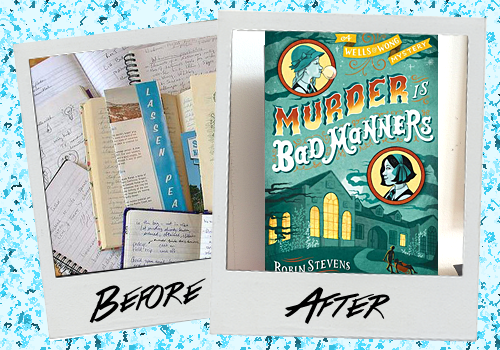
The “Now What?” Months are here to guide you through the editing, revision, and publishing processes! Every novel is the “after” picture to the first draft’s “before”. Today, Robin Stevens, Wrimo and author of the forthcoming Murder is Bad Manners , shares how she discovered what really matters to her novel:
The first draft: I won NaNoWriMo 2011 by the skin of my teeth. By the 30th of November my draft was 50,025 words and unfinished (it stopped in the middle of a sentence, and the murderer was not revealed). It was so much looser and more ugly than anything I’d produced before, and I panicked. I closed down the document in horror and simply pretended that it didn’t exist.
But I kept being itched at by that unfinished book. I needed to get the ending out of my head, and that meant going back and looking at the tangled pile of story that was already there. I didn’t know how to tackle an edit—it wasn’t anything I’d ever really done before—but then a friend gave me some advice…
"Don’t work from that old document," she said. "Create a new one, put the old one next to it and transfer the good stuff over."
The makeover: What she meant, it emerged later, was to work on a split screen, but what I actually did in early 2012 was to print out my existing story and then type up the whole thing again, not just editing but rewriting, deleting anything that didn’t seem to fit with the new draft.
This was a bit extreme, but it was also the beginning of an editing lesson that I’m still learning the importance of three years and three books later: what matters is the story. The words you use to tell it are just words. They might be nice words, they might be really beautiful words, but if they don’t help your story move forward, they need to be deleted. If you wrote them once, you know that you can write something equally good, or even better, again.
Remember that your NaNo draft is your first draft, and you should treat it not as a finished product but as a jumping-off point. In the months after NaNo, you’ve had time to really think about your story, and when you come to rewrite (as lots of you are doing now) you can give depth to your characters, tighten the loose parts, connect the dots and hone it into the lean, exciting book that’s hiding under your confusing first draft.
I’ve also discovered that good editing is collaborative. It’s important to take on board criticism from readers, whether they are agents, editors, fellow writers or your family. If something doesn’t work for a reader, it probably does need fixing. But don’t be upset, just step back and wonder why they picked up on that issue. Being a writer is a bit like being a story mechanic—only you can solve your own story, and I think that’s one of the most exciting things about being an author.
The final product: The most important thing I learned is not to worry about what’s in front of you right now. My NaNo novel, A Most Unladylike Murder (now published as Murder Most Unladylike in the UK in 2014 and Murder is Bad Manners in the US in April 2015), went through four more drafts after that first rewrite. My next book, Arsenic for Tea, published in the UK in January 2015, also went through four. So you don’t have to get it right first time—or even second, or third. You just have to get closer.
Remember this: your brain is amazing. That’s why you wrote a book. Have faith in that amazing brain. If it came up with something great a few months ago, who knows what it can do now? You’ll only find out if you try. Good luck, brave NaNo editors! The real fun starts here.

Robin Stevens was born in California and grew up in an Oxford college, across the road from the house where Alice in Wonderland lived. She has been making up stories all her life. She now works at a children’s publisher, which is pretty much the best day job she can imagine. Robin lives in Cambridge, England, with her boyfriend and her pet bearded dragon, Watson.
January 26, 2015
Why Revision is a Multi-Step Process

The 2015 “Now What?” Months are here! Throughout January and February, we’ll be bringing you editing, revision, and publishing advice from all corners of the publishing world. Today, Lexie Dunne, author of Superheroes Anonymous, tells us about the freedom that comes with revising alone:
My first NaNoWriMo, I was ancient—all of eighteen and very, very green. So green, in fact, that I didn’t understand the rules and didn’t know I needed to verify my word count. So while I crossed the finish line, I didn’t technically win. Six years and several official wins later, November had become an excuse to never sleep, hang out on the forums, drink far too much caffeine at write-ins, and drive myself to madness. In short, it was my favorite month of the year.
Superheroes Anonymous was my 2008 novel, so my memory of it is a little fuzzy. I do remember that I ignored the recommended rest period and kept writing. By December 10, I had a completed manuscript that was even messier than my apartment after a month of neglect and takeout meals…
I cleaned it up a bit, and then, I’m a little ashamed to say, I stuck it in a drawer. Four years later, Harper Voyager Impulse had an open submission. I figured it couldn’t hurt to submit that manuscript, did a spelling-and-grammar check, and sent it in. Fifteen months after that, when I’d completely forgotten about it, I got an email from my editor. Within two weeks, I had an agent and a book contract on the way.
Here’s the thing about a six-year-old manuscript left untouched while you’ve been consistently writing in the meantime: editing is a study in having a cast-iron stomach. I spent my first pass at revisions peeking at my work through the spaces between my fingers. Luckily, the second round was easier. The third round, I did in my sleep. (I know this because my brother-in-law has gleefully been highlighting every typo.)
This exercise in horror, though, taught me that it’s okay if you don’t get it right the first time. My manuscript changed so much between draft one and draft two that I imagine my editor’s reaction upon opening the document was to wonder if I had sent her the wrong story.
Honestly, sometimes it’s a good thing writing is such a solitary activity. The general public will never read that awful manuscript from six years ago. They won’t know that on November 12, I couldn’t remember the word ‘bicycle’ so I wrote “wheeled thingie.” I made up continents (which confused my editor) and committed atrocities on grammar punishable by death, but nobody needs to know that—unless I explicitly tell them in a blog post, that is.
There’s a lot of you that bit the bullet in November, wrote yourself a book (congratulations!! Seriously, that’s kick-ass!), and now you’ve got this massive, unwieldy thing to edit. I’ve been there many times myself. NaNoWriMo’s for getting the words on the page without stopping. But now? Now is that glorious period where you can take as much time as you need to get those words right. Even if it takes twelve times to do so. The only one that’s going to know that? You. So keep at it.
Also, you should be prepared to laugh at what you wrote, especially the stuff around November 18 or so. Because hey, it’s either laugh or cry.
Good luck!

Lexie Dunne is a woman of many masks, all of them stored neatly in a box under her bed. By day a mild-mannered technical writer and by night an adventuress and novelist, she keeps life interesting by ignoring it and writing instead. She hails from St. Louis, home of the world’s largest croquet game piece, and Superheroes Anonymous is her professional debut into the world of caped crusaders, a journey that started when her father took her and her brother to see The Rocketeer.
Top photo by Flickr user daniel_gafanhoto.
January 23, 2015
Discovering Character and Theme through Revision
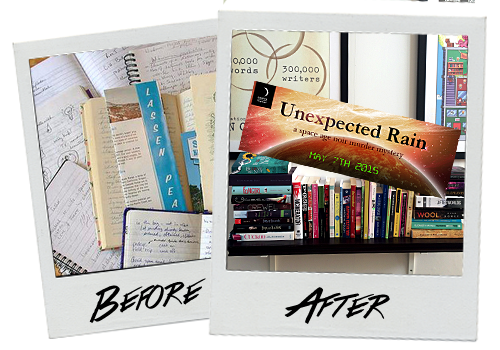
The “Now What?” Months are here to guide you through the editing, revision, and publishing processes! Every novel is the “after” picture to the first draft’s “before”. Today, Jason W. LaPier, author of the forthcoming Unexpected Rain , shares how he perfected character arcs and discovered theme while revising his NaNo-novel:
The first draft: At the end of November 2009, I had a big wad of words, fifty thousand in number. I’d attempted to write novels before, but it wasn’t until NaNoWriMo that I’d managed to complete one. I was so awash in my victory; naturally, I assumed that my first draft was perfection.
Until other people read it.
I had played by the rules: I had an outline, wrote without editing, wrote every day, and got from word zero to word fifty-thousand-something. Still, I had some gaps to fill. And since I was writing science fiction, I had plenty of info-dumping exposition to excise, creating more gaps. So for me, it was important to approach the next step by thinking in terms of “revision”, not just “editing.”
This is a key distinction, because instinctively, I wanted to go through the whole thing and line-edit sentences into sparkling diamonds. Cut out the sore spots and let the best shine through. But that’s editing: up close. In revision, what you’re really doing is stepping back…
The makeover: I had started NaNoWriMo with an outline, so a natural first step was to revisit that. Pantser or plotter, I think that after the first draft is complete, it’s an excellent time to go back and create or update that outline.
The next step was to look at my characters. After 50K words. I really felt like I knew them—which is to say I thought I knew their personalities. Feedback from my first readers was swift and brutal: “We hate these people.”
It was a challenge. ‘What do you mean,’ I thought, ‘I love these people!’ But I started by adding layers: balancing strengths with weaknesses, tweaking faults to be more endearing than annoying. After one workshop I attended, I had an epiphany about how television and film had adversely affected the way I wrote characters, and with some analysis, I could see what needed to be fixed.
Aside from personality work, I needed to take a long hard look at the characters’ arcs:
Who were they before the story, where did they come from?
During the story, at what times were they faced with challenges, those “change or die” moments?
How were they different at the end than they were at the beginning?
These questions allowed me to deepen my characters.
And finally, combining what I learned about my plot and my characters, I hit upon what I call “theme discovery”. Some believe that theme is reserved for literary writing, but I see its place in all genres. In my case, I didn’t want to force theme, but I wanted to be open to it. When I found a few key themes, boy did I grab on. I went back to that outline and those arcs and reinforced those structures with the glue of theme. I truly believe that glue is what turns a Pretty Good Story into a Great Story. Readers don’t have to know themes are present, but they’ll notice, because everything fits together.
The final product: A novel is a process. Every change, every cut, only serves to make the novel stronger. The first draft is not the novel it was meant to be; only through process does it become the novel it was meant to be. Don’t fight the process, embrace it!
Jason W. LaPier is a multi-genre writer, delving into science fiction, speculative fiction, horror, slipstream, literary fiction, and surrealism. His debut novel was born during NaNoWriMo and will be published by Harper Voyager on May 7th, 2015. Unexpected Rain is a space-age noir murder mystery and is the first in a trilogy. Jason now lives in Portland, OR with his wife and their dachshund. He is always in search of the perfect Italian sandwich.
January 22, 2015
How to Find a Great Reader and What to Ask Them

The 2015 “Now What?” Months are here! Throughout January and February, we’ll be bringing you editing, revision, and publishing advice from all corners of the publishing world. Today, Cal Armistead, author of Being Henry David, shares how you can find great readers:
So you finished the first draft of your novel during NaNoWrimo; now you have your glorious, gorgeous lump of clay. Hooray for the lump of clay! Before you started, there was nothing. Now, there is something. No, it’s not ready yet for the world to see, but you have the raw materials to mold it into something spectacular.
The first thing to do, is edit. Make it the best you know you can do. Then, you need somebody to read it. This is critical. Even big-deal authors need feedback, to offer outside-of-one’s-own-brain perspective.
How do you find these readers? The best readers are often other writers. Many libraries or bookstores offer critique groups. Or, take a writing class and see if anyone would be interested in exchanging manuscripts. (Your feedback is valuable to them as well.)
Just as an aside, it’s not a good idea to ask friends or relatives to read your manuscript. They love you, and therefore, will soften their critique to spare your feelings. This is sweet, this is lovely, but it won’t help you. You need someone who will be honest. If they are honest about the not-so-great bits, you can trust them about the fabulous bits, too.
Another way to go is to hire an editor. There are a ton of editing services listed online. Some are good, some not so much, so be careful. I can personally offer two excellent recommendations, people with whom I have personally worked:
Facets Fiction Editing is operated by Gina Hilse, a top-notch editor who knows her stuff.
If you’d like to work with a mentor who will guide you through the entire process, I highly recommend Leslea Newman, an award-winning author of over 65 books.
As for questions to ask your readers, here are a few suggestions:
What did you really like about my story? (Make sure they start with good stuff—we writers need encouragement before hearing the negatives.)
Is there anything that doesn’t work, or doesn’t ring true?
Are the characters believable?
Does the plot hold together?
Do you have any suggestions on how I might make the manuscript stronger?
Now, go to it—mold that lump of clay into a spectacular work of art, as only you can do. Good luck!

Cal Armistead is the author of the award-winning young adult novel, Being Henry David . Cal holds an MFA in creative writing from the Stonecoast program at the University of Southern Maine. In addition to writing, Cal is a voice-over actress and sings semi-professionally. She lives in a Boston suburb with her amazing husband and a dog named Layla, where one of her favorite pastimes is hiking around Walden Pond thinking deep(ish) thoughts.
Top photo by Flickr user diana robinson.
January 20, 2015
Not Sure How to Revise? Start at the Beginning
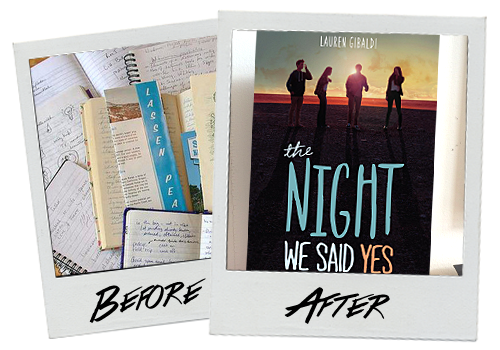
The “Now What?” Months are here to guide you through the editing, revision, and publishing processes! Every novel is the “after” picture to the first draft’s “before”. Today, Lauren Gibaldi, author of the forthcoming The Night We Said Yes , tells us how she figured out her revision process:
The first draft: I always wanted to write a book. I was great at starting them… not so great at finishing. So when I began NaNoWriMo, I was scared of failing again. But the deadline—the push to finish and not look back—that worked for me. I kept writing, never allowing myself to go back and edit. Even when I changed a character’s name, even when a plot line shifted, I kept going. I just wanted to finish, and finish I did with two days remaining. I cried. I had a completed manuscript… but I also had a problem: my first draft was a mess.
When I started editing, I wasn’t sure what to do, so I did the most basic thing possible: I read it from the beginning. Once I got an idea of what I had to work with (and ensured all characters were properly named), I created a detailed outline of what I wanted, and started working from the beginning. I cleaned up my grammar and spelling, I lengthened some scenes, and deleted phrases like “LAUREN FIX THIS” (yes, that was in there)…
Knowing the ending, I was able to work towards it better—weaving in little details, and getting rid of unnecessary parts. I deleted pages and characters and full plots, and though it was painful, I knew it was worth it. Yes, my first draft was messy, but I knew I would be able to clean it up. The finishing was the important part. So I pieced my little story back together and came out with a better product.
The makeover: Here’s what I learned from my revision process:
Have a notebook where you can jot down thoughts as they come to you. You don’t want to lose ideas if you can’t get to them right away.
Never really delete anything. Whenever I cut parts of the book, I saved them in a file called “Maybe” – that way I knew I could go back and get them if needed. I never did, honestly, but I was really happy knowing they weren’t gone.
Save! Back up everything. I have all of my writing saved on my computer, an external hard drive, Google Docs, and Dropbox. I’m paranoid.
The final product: Now, that little manuscript is a book! The Night We Said Yes comes out with HarperCollins in June, and I couldn’t be happier. After editing it on my own, with my agent, and then with my editor, a lot has changed, but at the same time, a lot hasn’t.
Backstory was tossed out, along with a few minor characters, but my initial idea I wrote for NaNoWriMo—four friends saying yes to every idea they have for one night and then repeating it a year later—is still there. The four main characters are still there. Heck, the first line I wrote is still there. Sure, I added some subplots. Sure, I changed the ending five times. But the essence of the book, what was created back in November 2013, still remains.
Go forth and edit! You can cut open your book and Frankenstein it back together. It won’t fall apart once you delete the first word. (It actually becomes freeing once you realize you can delete without fear!)
Yes, it’s scary, but every incision you make creates a better story. And it’s 100% worth it.
Good luck!
Lauren Gibaldi is a public librarian who’s been, among other things, a magazine editor, high school English teacher, bookseller, and circus aerialist (seriously). She has a BA in Literature and Master’s in Library and Information Studies. She lives in Orlando, Florida with her husband and daughter. The Night We Said Yes is her first novel. Find her on Twitter.
January 16, 2015
I’m Going to Finish My NaNoWriMo Novel No Matter What

The “Now What?” Months are here to guide you through the editing, revision, and publishing processes! Today, Grant Faulkner, NaNoWriMo’s executive director , tells us how he’s going to finally finish revising one of his novel drafts:
I’m haunted. I feel as if I have a phantom limb, a niggling itch that occupies more and more of my attention.
I’m suffering from a common writer’s ailment: I’ve written the first draft of a novel in the bravura style of NaNoWriMo, but it’s now marooned in the dark outer reaches of my hard drive (with a few other novels, truth be told).
Here’s the rub. As much as I love revision—simply because I can shape the contours of my story and dive deeply into my characters—I’m an expert at fake productivity….
I get trapped in an infinite task loop where I’m consistently accomplishing little actions, but making dubious progress toward completing the novel. I do research. I tinker with the first sentence, the first paragraph, the first chapter. I go back and do more research.
I’ve concocted these writing evasions because I don’t want to deal with the mess of the whole thing. My rough draft is like a toddler, just out of diapers, cavorting in glee, with crumbs of Pirate’s Booty on its lips and juice dripping onto its shirt. It’s knocking over things all over the place and yelling too loudly. I love my story’s exuberance, but I’m fatigued by the thought of teaching it to grow up.
Instead of reading how-to-revise books, I’ve decided I need to think instead about what goes into finishing a novel. “The road to hell is paved with works-in-progress,” as Philip Roth said, and I want to get out of this hell.
A friend recently told me that successful people are obsessed with finishing things. Here’s my plan:
First, I’m going to make a checklist of things that define what done looks like. Maybe it’s a detailed outline of plot points. Maybe it’s exploring a character’s background. Maybe it’s finding a beta reader.
Then I’m going take that list and apply what makes NaNo so successful for me: a deadline. Without a deadline for all of the tasks, my novel will exist in a perpetual state of ambiguous and dubious progress (I know because my last novel took 10 years to finish).
Lapses are inevitable, though. I recently read that 88 percent of people fail to keep their New Year’s resolutions, largely because when they lapse, they quit. I’m making a list of obstacles that I will likely face, whether it’s my kids interrupting me, self-doubt, or outright boredom with my novel, and think about how to overcome them.
I want to complete my novel because finishing not only gets rid of that annoying itch, it makes me a better writer and person:
I’ll get the opportunity to feel the glory of a well-crafted sentence, an exciting plot point, a deepening relationship with my characters.
I’ll learn the power of finishing—an incredible source of strength that will help me make it through the messy middle of many a creative project.
I’ll learn more about writing because trying to bring a story to perfection presents other galaxies of writing challenges.
And then, here’s the big benefit: I’ll be able to watch my novel at graduation like a proud parent. It will be finished, ready to be read by others. Hopefully, it will find a nice cover to wrap itself in, a bookshelf to live on, and will wish me luck on my next novel. There’s always another story waiting.
Do you have any tips on the art of finishing?
— Grant Faulkner
January 14, 2015
After Editing: Finding the "Right Story" In Your Draft
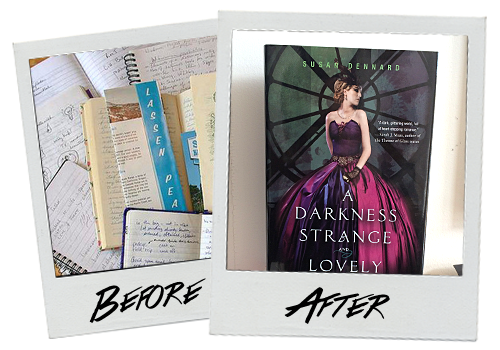
The “Now What?” Months are here to guide you through the editing, revision, and publishing processes! Every novel is the “after” picture to the first draft’s “before”. Today, Susan Dennard, author of the Something Strange and Deadly series and the forthcoming Truthwitch, tells us how she discovered the Right Story hidden in her draft.
Plus, this Thursday, she and author Jason Hough will be live-streaming their best tips for polishing a NaNo-novel draft! Donate to join them here.
The first draft: Every year, I write at least one new manuscript. And every year, I’m faced with revising that manuscript into something that’s not only readable, but good enough for publication.
That is totally easier said than done.
You see, I’m a just-get-the-words-out-as-fast-as-you-can sort of writer, and I view my first draft as an exploratory one. Needless to say, the end product is… well… messy. With my most recent completed novel, Truthwitch, I’d learned to embrace the mess. I knew myself well enough to understand that revisions were where the “magic” would really happen…
No joke: writing almost breaks me every time, but I love (100% all-caps LOVE) revising. Like, I wish I could somehow skip that whole drafting nonsense and just get straight to the revisions part of it all.
So, I word-vomited my way through an exploratory draft of Truthwitch, and then—oh, then I dug into the revising.
The makeover: Now, my first step for revisions on any project is to figure out the Right Story. What was the story I actually wanted to tell versus what I wrote, and how can I fix my characters, plot, setting, etc. to reflect that Right Story?
For Truthwitch, I found I had some major holes—like, entire scenes missing, character arcs that changed trajectory mid-book, or an entire subplot that just felt wrong, wrong, wrong upon reading (but gosh, it felt so right at the time of drafting! In fact, I’m pretty sure I thought I was brilliant as the words tumbled forth).
Still, the bones of Truthwitch’s story were there, and once I’d figured out exactly how I wanted the story skeleton to look, then I was able to begin the actual revisions process.
I happily dove in, hacking away for a month—word by word, scene by scene—until I’d rewritten, revised, and ultimately transformed my initial heap of word-vomit into something resembling a Real Story.
Of course, I might’ve had a cohesive story, but the book was still far from readable. So, I moved onto smaller issues next—the scene-level things like tension, dialogue, pacing, and prose. Because the book was huge (like, 160,000 words huge), this step took me several rounds over the course of a month—and even after that, I still wasn’t finished.
Nope, I was at Round 3, which (for me) means passing off my book to critique partners. I do this with every book I write, and Truthwitch was no different. Except…womp-womp. My critique partners feedback was rather harsh. It would seem the voice turned wonky halfway through the book, and without even realizing it, I was suddenly skewing much too young—almost middle grade in a book that was meant to be upper young adult.
So, after cuing up “Eye of the Tiger,” I dove back into Truthwitch and rewrote it! Again! Hooray!
(I was so not saying “Hooray” at the time, by the way.)
The final product: No matter my emotional state during those few weeks of rewriting, though, ripping apart the book was absolutely necessary. Because telling the Right Story is my end game—always—and it’s worth some extra months of hair-pulling to ensure my editor (and my readers!) get the best possible product.
So the moral of my Truthwitch revisions tale is pretty simple: don’t settle and don’t rush. Revisions are your chance to transform a so-so book into a great one—or a great book into an incredible one. All that work can seem daunting (trust me, I know!), but if you tackle a little bit everyday then, you’ll soon have a polished product ready for external eyes.
Susan Dennard has come a long way from small town Georgia. As a marine biologist, she got to travel the world, and now she’s the author of the Something Strange and Deadly series (HarperTeen) and the Witchlands series (Tor, 2015). When not writing, she can be found hiking with her dogs, earning bruises at the dojo, or practicing her tap dance shuffles. You can learn more about her crazy thoughts and crippling cookie-addiction on her blog, newsletter, Twitter, Facebook, or Pinterest.
January 12, 2015
After Editing: How Jason Hough Polished an Incomplete First Draft
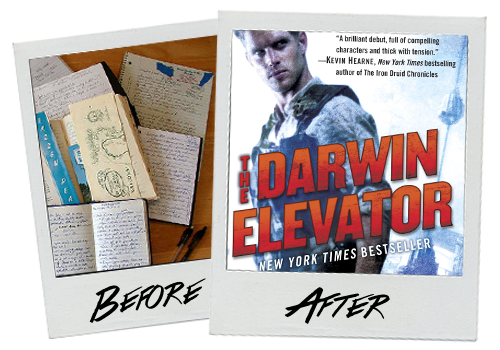
The “Now What?” Months are here to guide you through the editing, revision, and publishing processes! Every novel is the “after” picture to the first draft’s “before”. Today, Jason M. Hough, author of The Darwin Elevator and the forthcoming Zero World, tells us how he turned his unfinished NaNo draft into a New York Times bestseller.
Plus, this Thursday, he and author Susan Dennard will be live-streaming their best tips for polishing a NaNo-novel draft! Donate to join them here.
The first draft: My two NaNoWriMo efforts, while both victorious, left me in very different places. The first year, I wrote a complete novel, by which I mean I finished with the words “The End” at 50,280 words. The experience was rewarding and hooked me on writing, but the book fell apart at the halfway mark. I only finished out of stubbornness.
The second year, I had a plan. I went in with an outline and loads of upfront research. I wrote 52,000 words that November, which only took me to the 1/3 mark on my outline. More importantly, I was stoked about what I’d written, and hungry to keep going. Still, I had to finish that first draft before I would allow myself to revise…
I recommend that approach, because your vision of where you want to take your novel may change drastically once fully written. I had no desire to revise freshly written chapters only to later delete them for pace or plot reasons.
You must come to terms with the knowledge that your first draft will be ugly. Have confidence in your ability to make it shine later. Get the story out, step away from it. Come back with fresh eyes and start your revisions.
The makeover: When I revise, I start big. Major structural changes to the story, overhauling bland or one-dimensional characters, that sort of thing. With each pass I narrow my focus, until finally I’m just tinkering with prose. You’ll know you’re done when you can’t really decide if the changes are helping or hurting.
You know that feeling when, an hour after a conversation, you suddenly think of something brilliant you should have said? That perfect reply? That hilarious, insightful, or just damned clever quip? Well, I love revising because it’s like getting to do that over and over again.
Editing is the fun part of the writing process to me. Every hour spent makes the book appreciably better. Elegant solutions to nasty plot holes leave you feeling like you just solved a Rubik’s Cube in 22 seconds flat. Embrace it!
The final product: How did the final draft of The Darwin Elevator compare to the first? If I were to summarize the plot, they’d sound identical—that’s good, it means my outline worked. But I’d venture to guess fewer than 10% of the original words survived.
I cut sprawling, irrelevant subplots. I went from 11 POV characters to 4, requiring half the chapters to be rewritten from a different perspective. I wrote an entirely new opening chapter because once the draft was done I thought of a better opening scene (that last has become a trend for me, by the way). Most of all, though, I worked on the characters, looking for any opportunity to bring more of their personalities to the page.
And the payoff? That book eventually became a bestseller.
Jason M. Hough (pronounced ‘Huff’) is the bestselling author of The Darwin Elevator, The Exodus Towers, and The Plague Force. In a former life, he was a 3-D artist, animator, and game designer. He began writing The Darwin Elevator in 2008 as a NaNoWriMo project. The book, his first publication, reached the New York Times Bestseller list shortly after release. His next novel, Zero World, is coming in 2015. He lives near Seattle, Washington with his wife and two young sons.
Chris Baty's Blog
- Chris Baty's profile
- 63 followers







